SECOND NATURE
Wildest dreams: Meet the Karoo farmer who’s bringing back the wilderness and resurrecting ‘dead’ towns
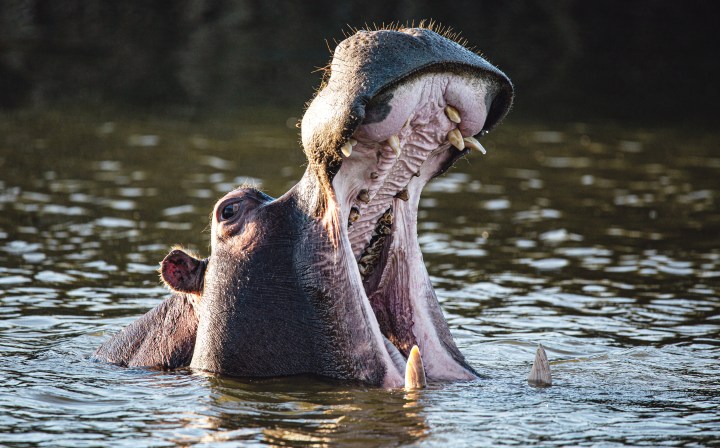
Piet Cronje ‘PC’ Ferreira says that, after 28 years, his own transformation from farming only to a sustainable farming, conservation and tourism enterprise is complete. Now he’s working with some of the central Karoo’s most troubled municipalities and conservation organisations on an ambitious plan that goes way beyond re-establishing the area’s wildlife and fragile biodiversity.
‘Early records show that, at one stage, colonial hunters shot 25 hippos a day along this Seekoei River. They even used them as bait to catch the San bushmen,” says PC Ferreira as he leans against the rail of a small jetty jutting out over the river, on his farm between the Karoo settlements of Richmond and Hanover.
The river runs through his farm, part of its 300km journey between its source in the Compassberg outside Nieu-Bethesda in the Eastern Cape, and the Vanderkloof Dam, a Northern Cape Department of Environment and Nature Conservation property.
This Karoo born and bred farmer says the last hippopotamus in the area was shot 230 years ago. But, today, we are looking for one, which speaks to a reintroduction programme, the journey Ferreira has been on to get them back, and the creation of a vast private nature reserve in the central Karoo.
Gazing out at the reeds, Ferreira says he had five hippos in the 300km river until not too long ago, but natural causes and fighting among them left only one bull, with no family or potential mate. The jetty is where he says the bull is usually found at this time of day.

Farmer Piet Cronje ‘PC’ Ferreira, the driver of the Karoo Seekoei River Nature Reserve initiative in the central Karoo, tends to a beehive on his property. He hopes to use hives as a common thread in linking the 13 towns around the proposed reserve. (Photo: Angus Begg)
The rains have been good and the river looks healthy, with white-fronted swallows and darting swifts feasting on invisible insects in flight.
“When he sees me, he is curious and usually comes over.”
The tell-tale collection of bubbles next to the reeds on the opposite bank of the river signals the presence of the sole Seekoei River hippo moving quickly beneath the surface, causing me to think of the almost comical television documentary footage of hippos “swim-running” underwater. He pops up about 40m away.
This hippo, alone in the Great Karoo, has nowhere to run to, nothing to run for. Hopefully not for much longer, says Ferreira, who is waiting for news from SANParks about a hippo cow that will be relocated from the Kruger Park to this part of the Seekoei River.
He is also waiting for four white rhino to be delivered, which is in addition to the small herd of buffalo already on his farm.
South Africa’s largest private nature reserve?

The central Karoo landscape tells a story of beauty and economic hard times. (Photo: Supplied)
It is this narrative, of large mammals’ prior existence and relative extinction in the Karoo, that is behind Ferreira’s proposal for the declaration of a 450,000ha Karoo Seekoei River Nature Reserve (KSRNR).
In preparing to restore the river’s hippo population, he had the family’s farm declared as the Karoo Gariep Nature Reserve 21 years ago. This entailed applying for “hippo permits, obtaining [government] fencing directives and developing a section of the Seekoei River into an approved environment for hippo”.
The first hippos were released in December 2006, with “babies sighted” in January 2008, 2013 and 2014.
For his efforts in getting hippos back to the Seekoei River, Ferreira was recognised by former SANParks CEO Dr David Mabunda in 2008 with a Kudu Award in the Community Contribution to Conservation category.
The award recognised his efforts in increasing “biodiversity in the region, but also increased tourist traffic to the area, which is benefiting the whole community”.
It’s a point echoed by Johan Jonk, the stewardship biodiversity officer of the Northern Cape Department of Agriculture, Land Reform and Rural Development, who has worked with Ferreira.
“If the initiative were to become a reality, it potentially could contribute in two ways – safeguard biodiversity (an entire river from source to mouth) and further develop the economy in a sustainable way,” Jonk says.
In a landscape where faith is often relied on to bring rain, the two men seem to be singing from the same hymn sheet.

The Seekoei River, in the Northern Cape Karoo, where, historical records show, hippos were abundant in the late 1800s. The sole surviving hippo can be seen just behind the reeds in the middle of the picture. (Photo: Supplied)
Wildlife and livestock
“I believe that the Seekoei River Initiative is important and that every effort [should] be made to make it a reality,” says Jonk.
In keeping with his portfolio, he also adopts an economic view, emphasising that the farms that would be involved in the KSRNR are mostly stock farms that cannot be developed any further as stock farms, because grazing capacity has already been reached.
“However, Ferreira’s vision would be to add another component, tourism, which is still underdeveloped, further grow[ing] the economy of the area, which has some of the poorest communities in the country.”
Ferreira’s proposal has been finding favour with not only rural development players, but also with municipalities, academics and conservationists.
His conservation dream has run with the relative speed of a wildfire around his Karoo-Gariep Nature Reserve: buffalo, red hartebeest and eland were donated by Northern Cape provincial parks; the 450,000ha of the KSRNR – still a proposal – was included in the Northern Cape government’s protected area expansion programme; and a research station hosting 12 students was built on his farm in partnership with the Biodiversity and Development Institute (BDI) in 2019.
That same year, the first BDI citizen science seminar was hosted on Ferreira’s farm.
Les Underhill, BDI head and retired University of Cape Town statistics professor, says Ferreira “is amazing”, and that the institute has chosen to partner with him because he has an important vision: “He wants his farm to produce food and he wants to protect its biodiversity at the same time.”
On the ground, roan and sable antelope have been introduced to the reserve, with Ferreira having the Hanover Aardvark Nature Reserve, a second nature reserve, proclaimed on his parents’ nearby farm.
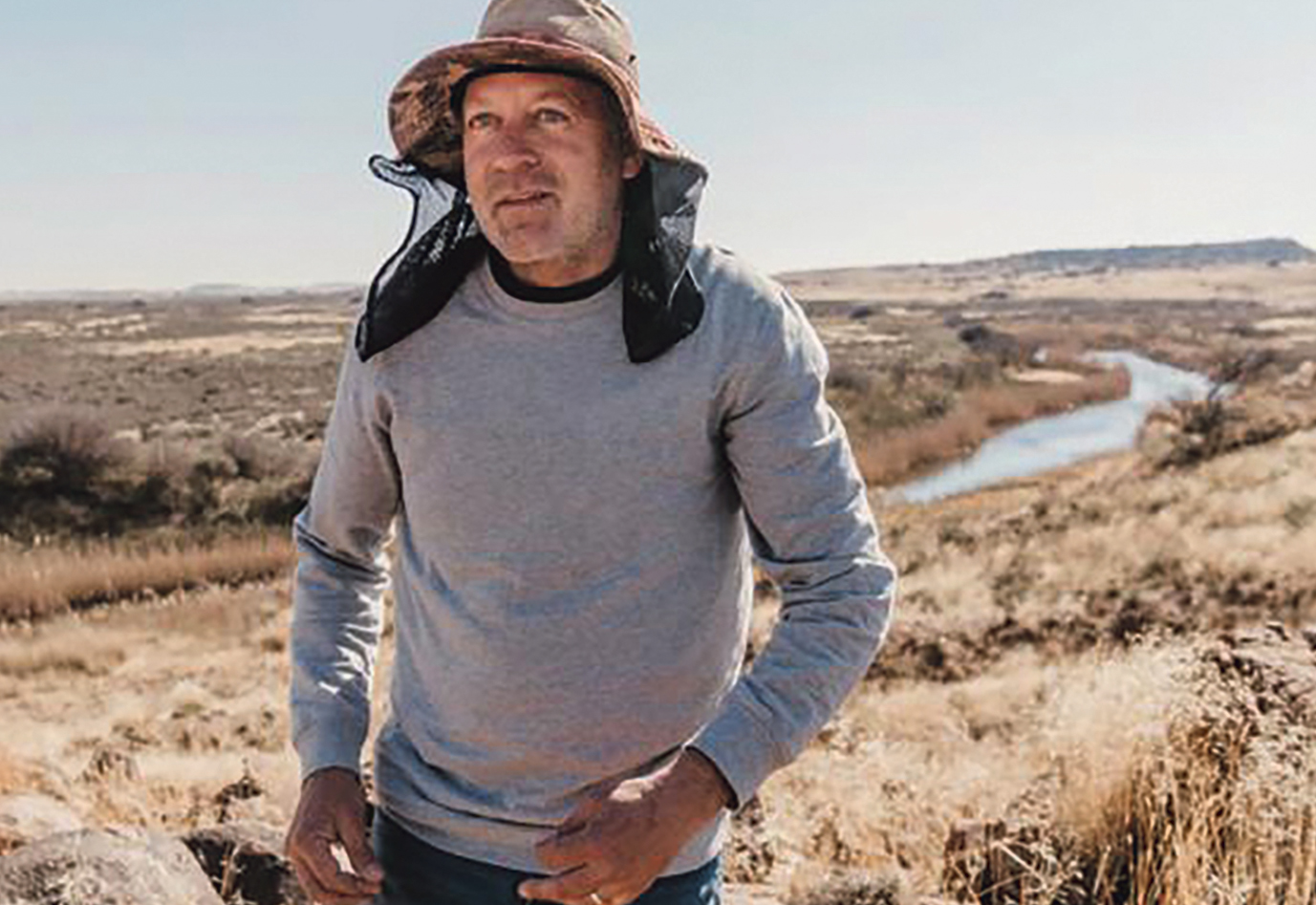
Karoo farmer PC Ferreira on his farm-cum-nature reserve, with the Seekoei River in the background. (Photo: Supplied)
Big skies, big picture, big plans
Today, Ferreira shares some of that biodiversity by taking guests on “shy five” night drives once his day of farming sheep and cattle is done, revealing porcupine, aardvark, aardwolf, bat-eared fox and black-footed cat. He says it’s a strong tourism product in an area that remains dominated by livestock farming. There is a large flock of blue cranes that roost at his dam every winter and he has been acknowledged by the Endangered Wildlife Trust Crane Conservation Group as a crane custodian for his conservation efforts.
But he says it’s the “big picture”, the potential inherent in such a large nature reserve, that drives him.
Breaking down the numbers over a map of central South Africa, the proposed KSRNR lies between the Eastern Cape towns of Nieu-Bethesda and Petrusville, following the flow of the Seekoei River to just east of Hanover and west of Colesberg in the Northern Cape.
It is a large tract of natural veld that would stretch about 250km from south to north and about 100km from west to east at the widest point, comprising 57 properties.
Ferreira says that among those already signed up to the project are “a core group of conservation-minded landowners” who “came together because they would like to see the area transformed into the once-pristine wilderness area Colonel Robert J Gordon witnessed in his well-documented travels of the late 1700s”.
Gordon was “a botanist, zoologist, ethnographer, linguist, geologist, cartographer and draughtsman”. In his 20 years at the Cape, he recorded “an enormous quantity of material, both visual and verbal, concerning the topography, fauna, flora, meteorology, geology and inhabitants of South Africa”.
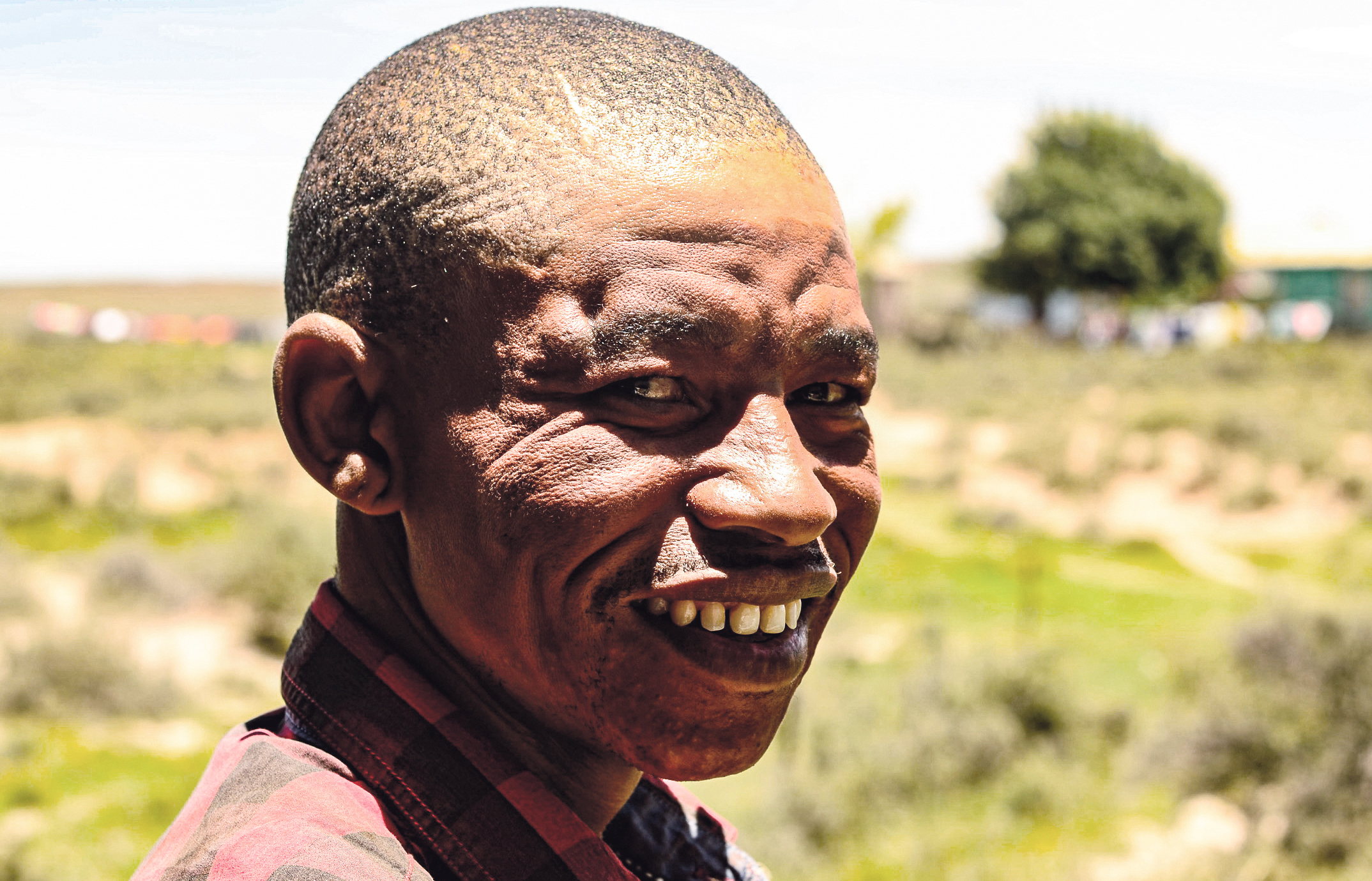
Richmond farmer PC Ferreira hopes to give Karoo residents like farmworker Steyn Bosman an insight into their deep San heritage through the establishment of a heritage centre in one of the 13 towns in the region. (Photo: Supplied)
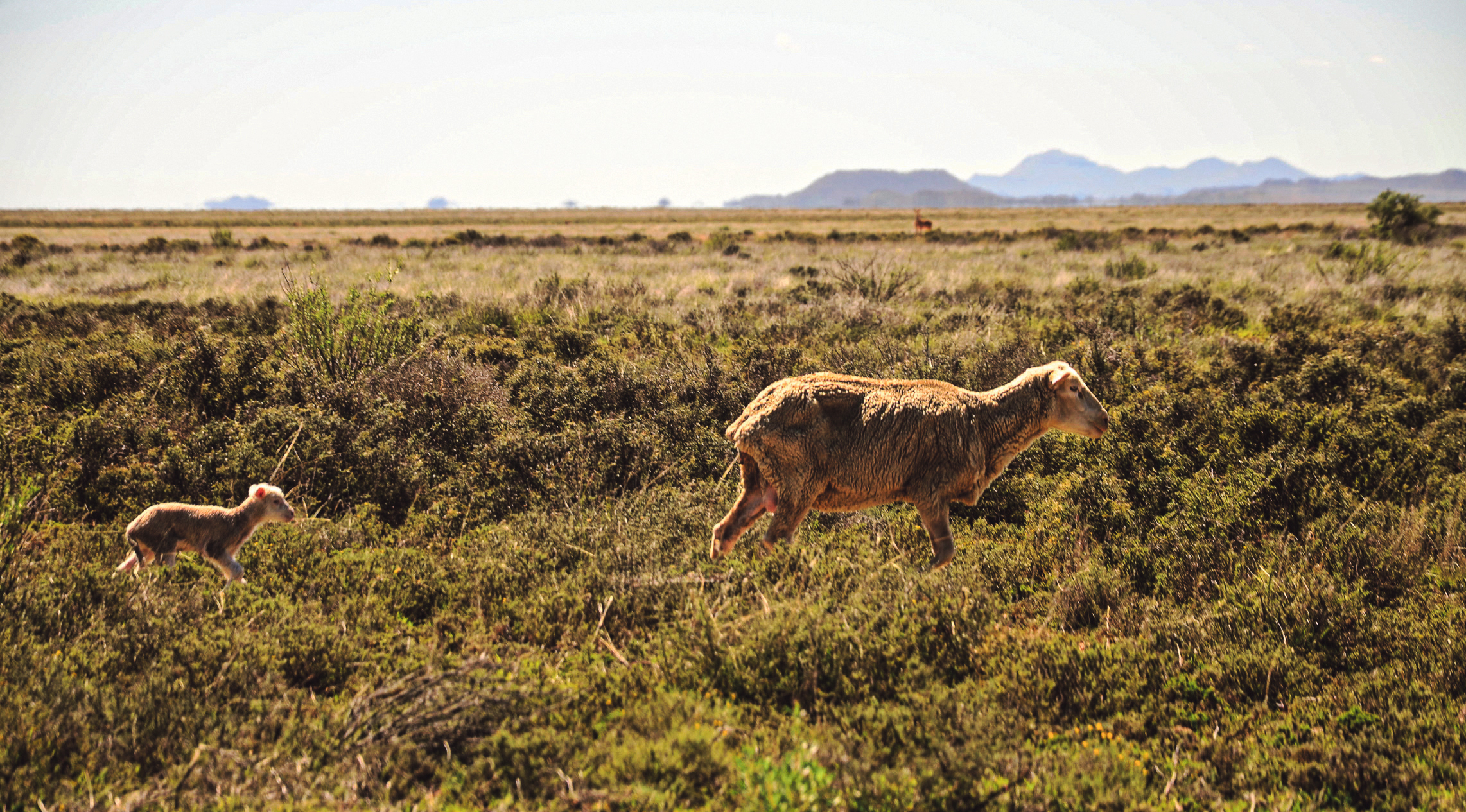
PC Ferreira says his farm is now ‘fully transformed’, home to livestock and wildlife. While tourism has been added as an income stream, he is protecting and restoring the region’s fragile biodiversity. (Photo: Supplied)
It’s all about the numbers
Regardless of the Karoo’s harsh beauty and its contribution to the country’s biodiversity, it’s a hard place to farm, and Ferreira knows farmers won’t buy into his project unless it makes financial sense.
Ellané van Wyk of Wilderness Foundation Africa, says farmers in the area have been struggling for the past few years because of the severe drought.
At the same time – as the foundation’s environmental tax services and training, innovative finance lead – she says she feels that although it is ambitious, this project “can be done”.
Van Wyk says that combining farming with protected area status “has been done in other places in South Africa where rotational grazing and reduced stocking rates are applied in line with protected area management plans”.
Jonk says there are examples in South Africa where landowners have joined in declaring large areas as protected areas. He gives the examples of the Dinokeng Game Reserve outside Pretoria and the Mountain Zebra-Camdeboo Protected Environment in the Eastern Cape Karoo.
Working with Jonk on the foundation’s Northern Cape Land Project, and to help landowners access tax benefits aimed at stimulating the tourism and conservation economies, Van Wyk says she “did the numbers” of the proposed KSRNR reserve.
The 57 landowners who are connected to it by virtue of their location may also qualify for tax deduction – if they choose to participate, she says.
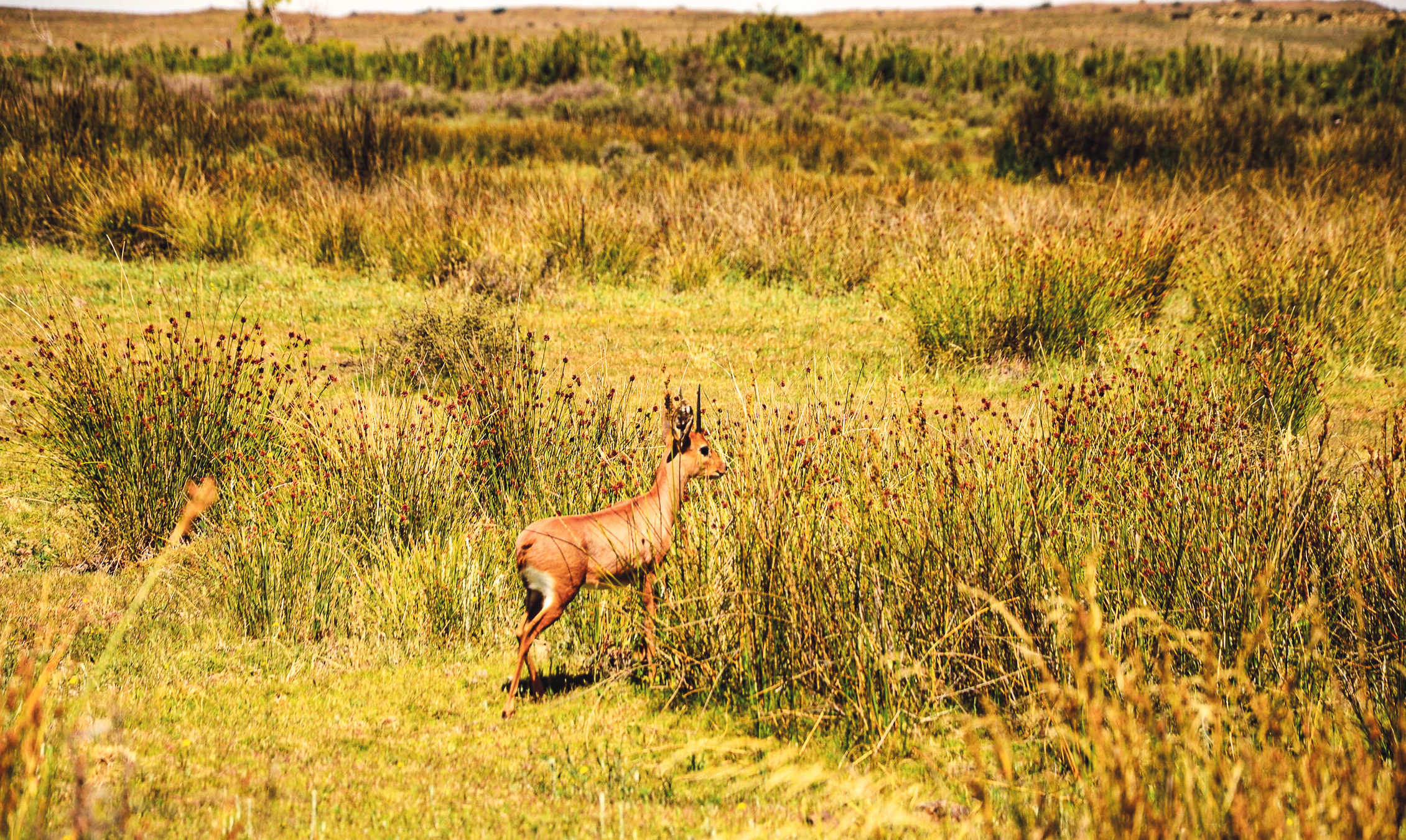
A steenbok on Karoo farmer PC Ferreira’s Karoo Gariep Nature Reserve, just off the N1, outside Richmond. (Photo: Supplied)
“Tax efficiency is regarded as one of the most important aspects of financial sustainability. Reducing tax payable by these landowners may enable them to spend more resources on conservation, employment and in improving the lives of communities within and around the proposed protected area.”
This must sound like rain in the desert to Ferreira. The Karoo farmer is all for the improvement of the whole region, saying it could help prevent the death of various Karoo towns.
A drive through a decaying Noupoort, as just one example, provides proof of the need for his vision.
Community and tourism
Ferreira says that, after 28 years, his own transformation from farming only to a sustainable farming, conservation and tourism enterprise is complete, citing the December visitor statistics for their 86-bed establishment: 1,650 people were accommodated from 10 December to 15 January, with most going on a night drive.
“They are attracted by nature. We [his family] cannot leave as we carry a vision and people come for that vision.” As an avid birder, he says he has counted 225 species on his farm-cum-nature reserve.
Ferreira is well aware, however, of the importance of community buy-in to such a project – beyond nature and wildlife – from local (often troubled) municipalities to farmworkers.
To this end, he has engaged with municipalities and registered non-profit organisations (NPOs) to support his vision.
Through the Karoo Oasis Route, he says he can incorporate – in partnership with the Northern Cape Tourism Agency – what he refers to as “13 small, dead and bad towns around Hanover” into a tourism route.

The Seekoei River runs through PC Ferreira’s Karoo Gariep Nature Reserve. (Photo: Supplied)
Through the Khoisan Karoo Nature and Community NPO, he wishes to start “a central house of safety, a skills-training facility and a heritage hub for the lost San people of the Karoo”.
He says he has had a meeting with social workers in the relevant areas “to identify the cases to bring into the house of safety”.
Being the owner of a successful tourism destination, Ferreira says he is now pursuing an integrated development plan to address what he calls “the tourism killers”, citing plastic-bag litter, street kids begging, no water and electricity as chief culprits.
“To bring tourism in, we need to lift the whole town,” he says.
It’s ambitious stuff
“I’m just a cog in a big wheel,” says the busy Ferreira, mentioning the rhinos he expects to be offloaded at his reserve in the next couple of weeks.
“I will dedicate the next 10 years of my life to these three NPOs. They can change the 13 towns in my area.”
In an agricultural landscape dominated by news of farm attacks, and a national news environment dominated by an imploding and underperforming government, these developments in the large and quiet Karoo make for a happy project. DM168
This story first appeared in our weekly Daily Maverick 168 newspaper which is available for R25 at Pick n Pay, Exclusive Books and airport bookstores. For your nearest stockist, please click here.
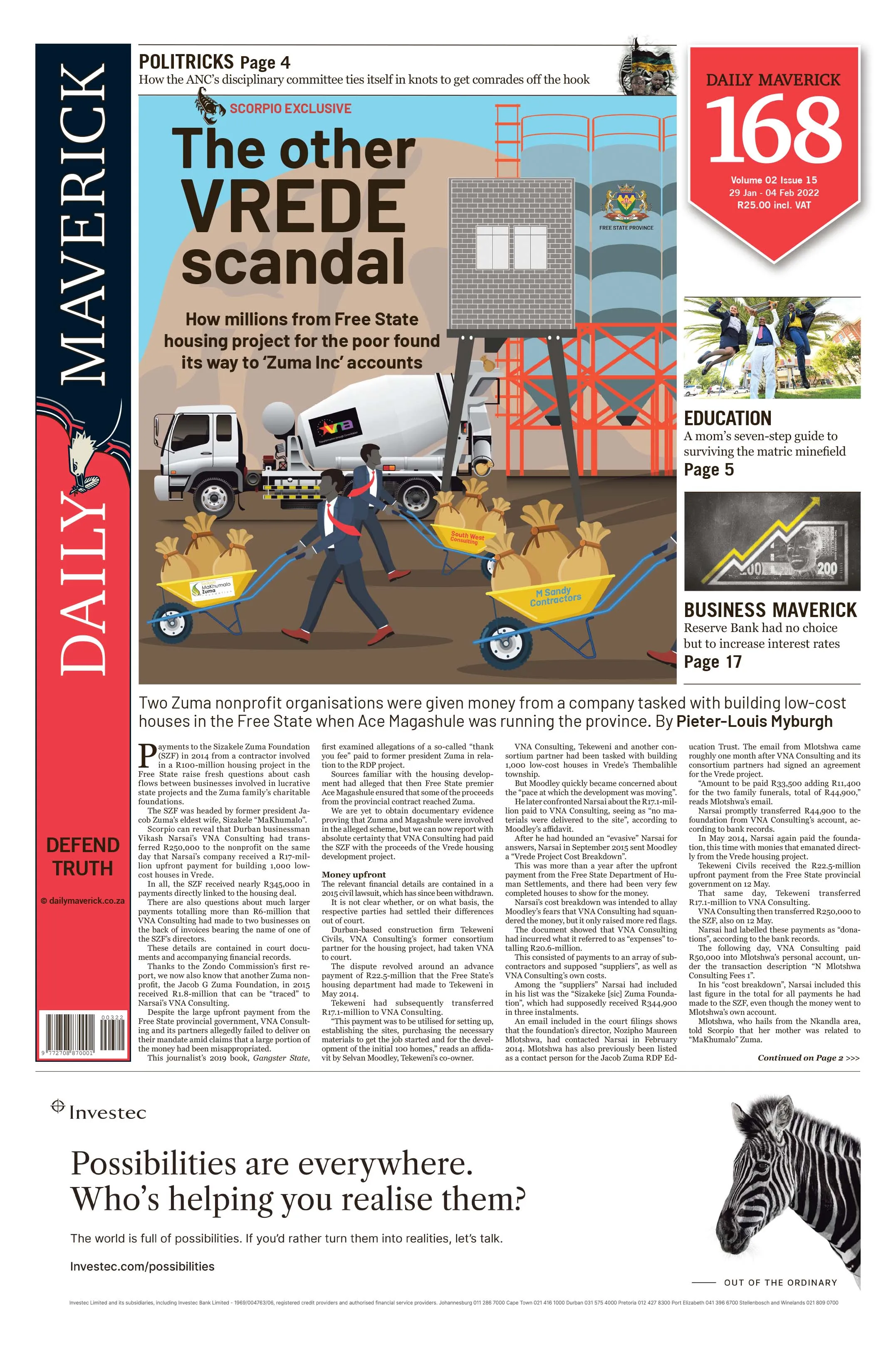
[hearken id=”daily-maverick/9041″]

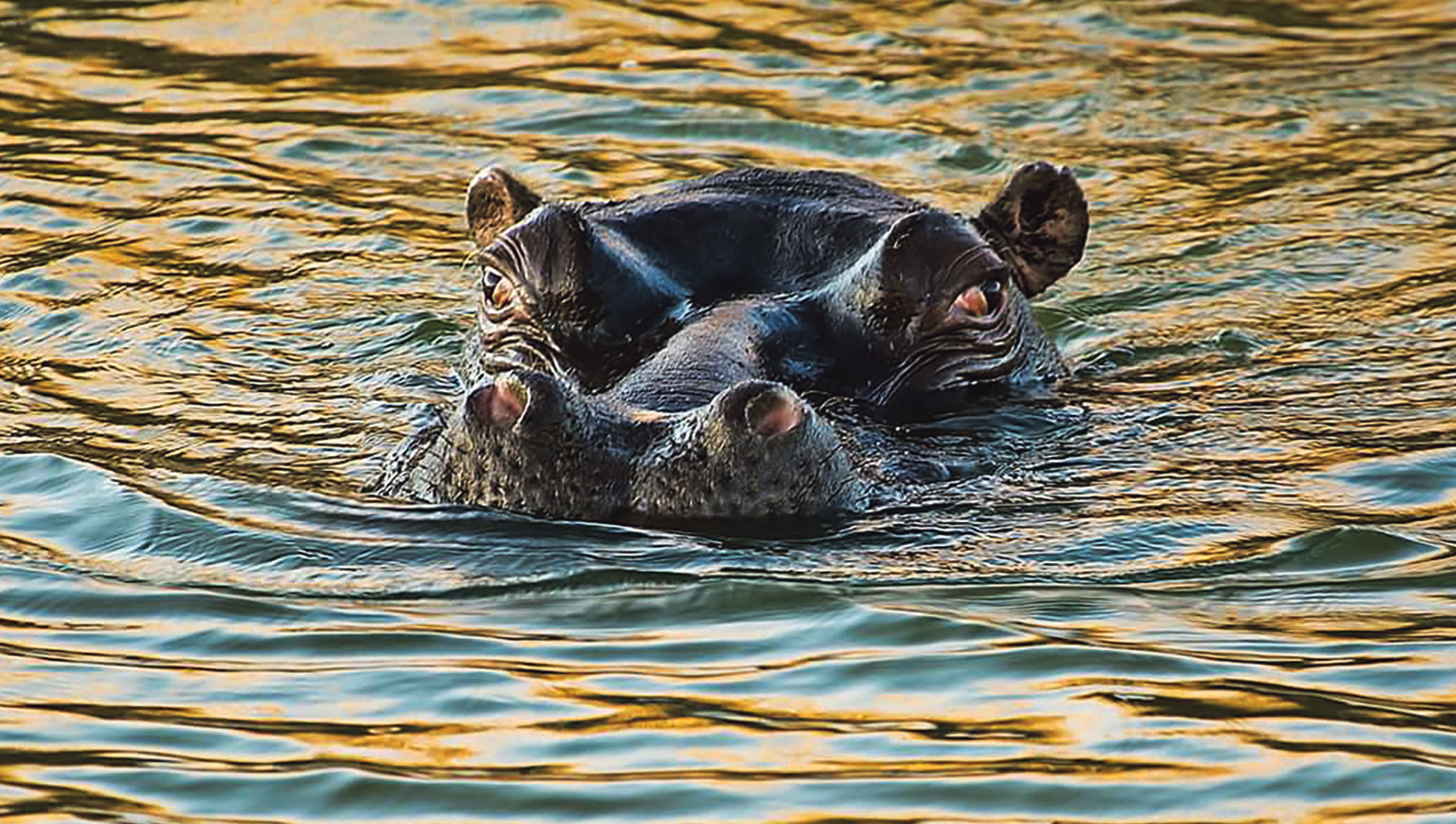

















 Become an Insider
Become an Insider
Strength to you, PC. We need more visionaries-cum-doers like you.
In a country where so much is not working and so many are ‘in it for themselves’, a story such as this is especially encouraging. Thank you PC for your remarkable vision and dedication, and Angus for telling us about it. I look forward to following the story, so please keep us posted.
Yes agreed, it is lovely to read such a positive story and especially in an area with so much to offer. Well done farmer Ferreira, you show the kind of leadership that out public servants just don’t have.
Thanks for the ray of hope amongst the doom and gloom reporting
Such a refreshing and heartwarming story. Since the pandemic we’ve taken to driving from Joburg to CT for our Dec holidays. What a pleasure! We’d forgotten what our country looks like. We sleep over in Beaufort West and Colesburg to and fro. We’ve always lamented the barren looking towns like Hanover but hey, people live in all corners of the world. PC Fereirra I applaud the work you’re doing broer, it’s an amazing project. How I wish I still had energy. Good luck!
An inspiring story that brings light to the gloom we live in.